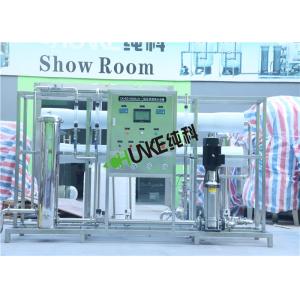
Add to Cart
1T/3T/5T Per Hour RO System RO Water Purifier RO Plant Machine For Selling Purified Water
Reverse Osmosis
Reverse osmosis (RO) is a water purification technology that uses a semipermeable membrane to remove ions, molecules and larger particles from drinking water. In reverse osmosis, an applied pressure is used to overcome osmotic pressure, a colligative property, that is driven by chemical potential differences of the solvent, a thermodynamic parameter. Reverse osmosis can remove many types of dissolved and suspended species from water, including bacteria, and is used in both industrial processes and the production of potable water. The result is that the solute is retained on the pressurized side of the membrane and the pure solvent is allowed to pass to the other side. To be "selective", this membrane should not allow large molecules or ions through the pores (holes), but should allow smaller components of the solution (such as solvent molecules) to pass freely.
How Do I Know Which Size Unit to Buy?
General guidelines for modeling an RO system to take into consideration are the silt density index (SDI) measurement of the feed water after pretreatment. Derived from experien- ce, limits on permeate flux and element recovery for different types of waters are based on correlation of the SDI value with membrane fouling and mineral content with element re-covery,respectfully, for different types of waters. These ge- neral limits shown in Table 1 below serve as boundary condi-tions when designing a RO system. A system designed with high permeate flux rates for example is likely to experience higher fouling rates and more frequent chemical cleanings. Due to high salinity (>36,000 ppm TDS), seawater system de-signs are further
limited by the osmotic pressure and durabi- lity of the membrane elements